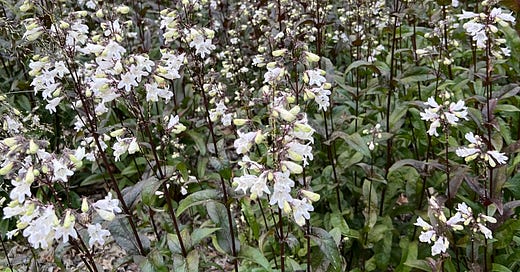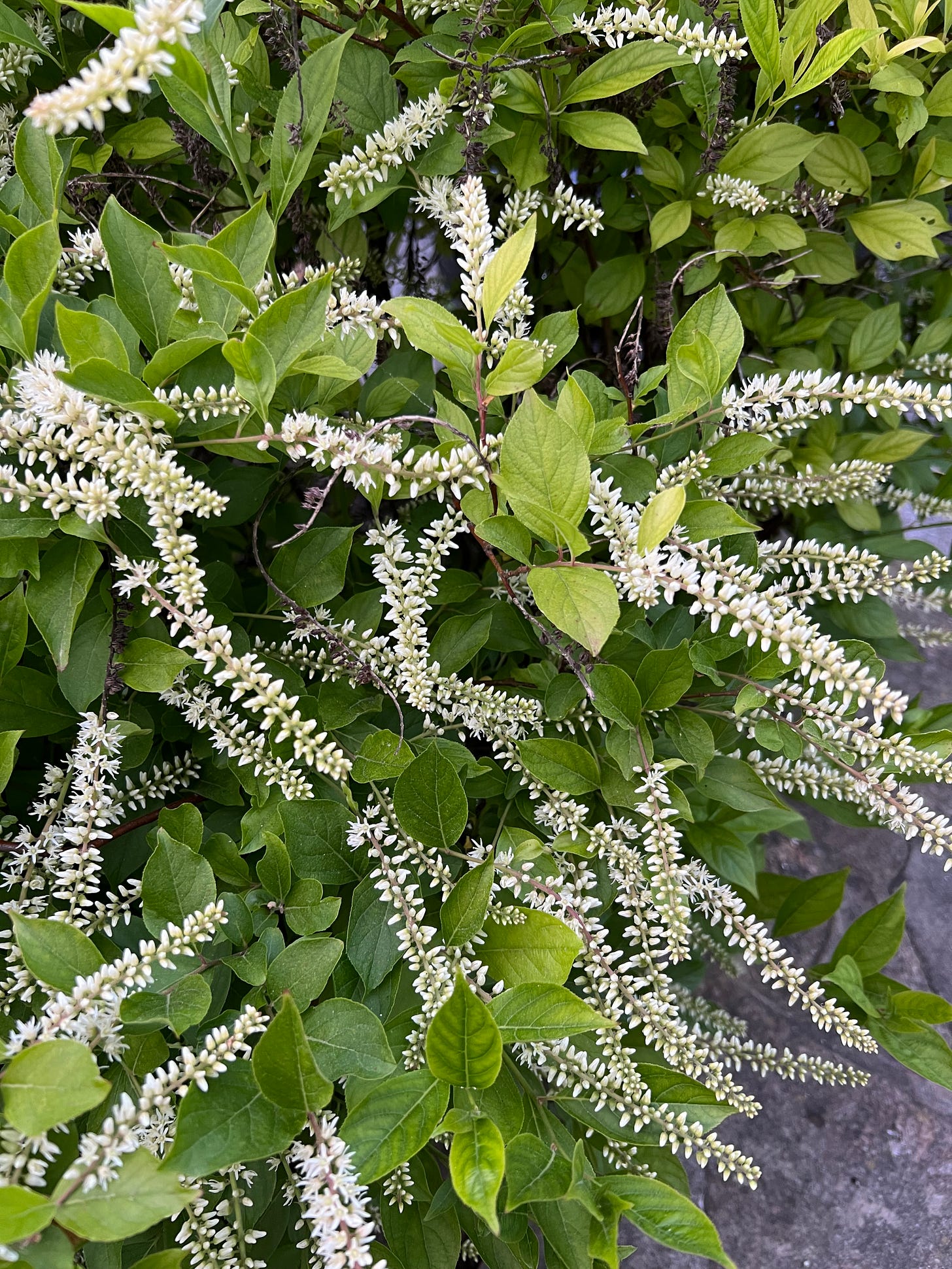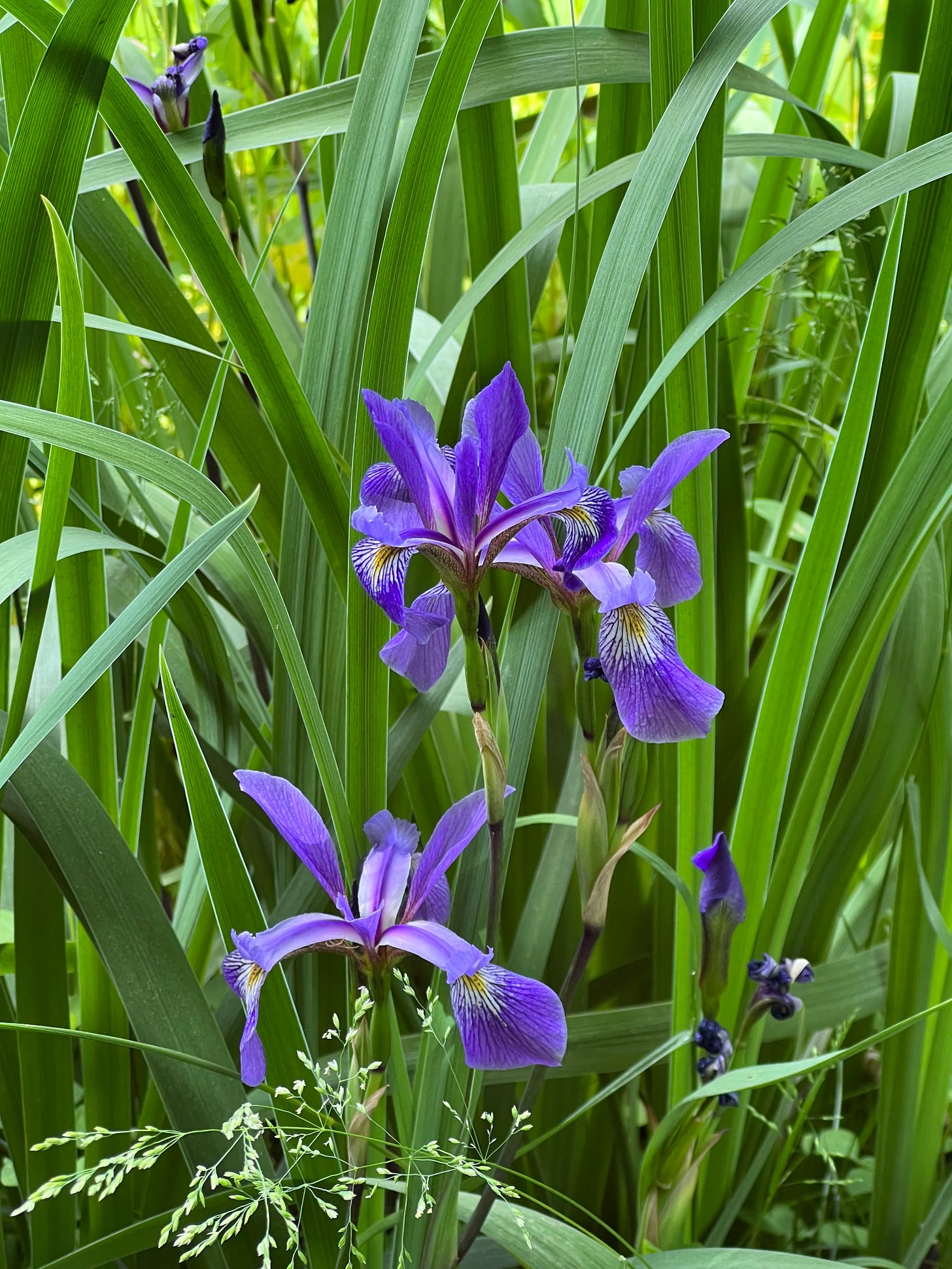Disappointments of Spring
Puddock Hill Journal #37: As any gardener knows, life is not always a bed of roses.
In this age of social media, we too often dress up our lives like perfect mannequins in a shop window instead of telling it like it really is. There are three reasons for this, I think. First, we all want to appear like winners all the time. Second, we are bucking ourselves up. Third, we have a sneaking suspicion that no one wants to hear the bad news.
I sometimes fall into this trap with the Backyard Stewardship newsletter, although for different reasons. Mainly, I want people to embrace the principle of supporting wildlife by cultivating the native plants on which wild animals rely. The deeper reasoning is selfish: If we destroy our ecology, we destroy our children’s and grandchildren’s prospects for living happy lives—perhaps for living at all.
But, let’s face it, if the practices required for backyard stewardship were a bed of roses, more folks would probably be doing it. One visit to a meadow overrun by invasive plants can be enough to remind us why humans invented the mower. This stuff is hard.
I don’t use the meadow of invasives as a random example. This spring, we see setbacks not only in the meadows but all over Puddock Hill. Partly, this is because my main helper battled injuries this winter that prevented him from completing the all-important late-winter/early spring brush hogging and string trimming. I returned home from California with my own mobility-limiting injury, making it more challenging for me to help out. Finally, there are a couple factors beyond our control—neighbors and weather—which I’ll get to in a bit.
What setbacks did we return to at Puddock Hill? Let me tick off a few.
Pond Algae
I have written before of the several ways we attempt to limit algae growth. I don’t use the word “eliminate,” because that would likely require overkill with unintended consequences. Furthermore, having some algae is natural.
The spillway we constructed is one of the main ways we control floating algae, but every year invasive Eurasian watermilfoil (Myriophyllum spicatum) eventually chokes off the skimming effect by growing to the surface. Last fall, I committed myself to donning waders and raking out a channel—at least once a week if I had to—but my foot injury has interfered with this plan so far, and the watermilfoil has already begun to grow thick. The pond is not covered with algae at this point, but it appears as if the trend is not my friend. A point of no return fast approaches, and already the moment for fully getting ahead of this mess may have passed.
Another way to control pond algae (and likely watermilfoil, too) involves limiting nutrients. In this regard, I’m disappointed to report that a pair of Canada geese has dropped in and apparently decided to stay. Although they do not appear to be breeding, their poop around the pond doesn’t help things.
Invasive Plants
Last year, our assiduous effort to fight back multiflora rose seemed to gain great traction. There will always be some of this nasty invader around, but none flowered. This year, it has come roaring back and there are many spots where flowers appear. As it tends to flower off stalks allowed to become woody, this is a clear sign that we lost some moment in our efforts at mechanical control. But there are also young plants everywhere, likely due to seeds carried from other properties in the neighborhood—one of those things beyond our control, though town-wide education might help. Indeed, a casual drive along nearby roads reveals mature multiflora rose bushes in thick bloom—a sign that explains both recent proliferation and the prospects of worse to come.
In meadows and in developing woods, I’m seeing a great deal of Amur Peppervine aka porcelainberry (Ampelopsis brevipedunculata), much of it springing from woody runners along the ground that are not easily torn up (if that’s possible at all). Of course, constant mowing would set back this noxious invader, but that would kill native perennials at the same time. This summer may prove that I do not have the resources to fight off this plant with string trimming alone.
Wearing a medical boot, over Memorial Day weekend I wandered into the small pond meadow with string trimmer in hand. The drier areas had been properly brush-hogged this winter, yet invasive Canada thistle (Cirsium arvense) has come roaring back. So has poison ivy, which is the one native plant I try to control. My string trimming efforts have now yielded a nice (read: not nice) rash, as I stupidly undertook the effort while wearing a t-shirt that exposed my arms to all the butchered plant matter flying around.
In some instances, I discovered multiflora rose getting woody in wetter areas of the small pond meadow, where the mower can’t reach. I waded in with a hand pruner, but this requires much more work than I had time or energy for that day.
On the slope from the driveway toward the small pond meadow—one of the first slopes we stopped mowing years ago—Asiatic tearthumb aka mile-a-minute weed (Persicaria perfoliata) is already asserting itself. This is discouraging both because we have tried to be pretty persistent in knocking it back with string trimmers over the past few years before it set seed and because it insinuates itself so well (and so quickly) among native perennials that the string trimmer often must take out much good with the bad. A depressing exercise, to say the least.
Then there’s the Japanese honeysuckle (Lonicera japonica)—shrub and vine varieties. We did not cut back the big pond banks for the past two years in hopes that natives such as willows and goldenrod would proliferate and outcompete most invasives. (We allowed the banks to grow up to capture some nitrogen runoff into the pond and to discourage geese. See Geese: !@#$%&!) But, of course, the invasive plants are unrelenting competitors, and we are now beset with honeysuckle vines.
In the woods above the big pond, a handful of large honeysuckle shrubs that I have temporarily allowed to remain in order to maintain some understory for wildlife have taken the opportunity to seed the entire hillside, which we didn’t attack in the off season. Now removing those younger shrubs would involve potentially killing lots of good native plants I’ve been encouraged to see such as Canada lettuce (Lactuca canadensis) and mayapple (Podophyllum peltatum).
In short, the invaders have come roaring back, and this year I appear to be losing the war of attrition even before the official start of summer.
Dead Stuff
Any gardener knows that the enterprise requires a degree of trial and error. Some plants don’t thrive where you put them and others outright die.
Our new garden beds have come back unevenly for their first spring. The lower front beds are thick with beardtongue (Penstemon spp.) in bloom:
But some sections of the upper beds are struggling, which means we’ll have to rethink the mix.
Of hundreds of young trees we planted in the past few years, we have probably lost half along the way. And while most of those that survived through summer seem finally to be establishing themselves, we did lose a few more this winter in the east woods and above the big pond. Also, we lost several of the dozen or so native volunteers that we relocated last fall.
If the remaining trees could only grow out of the danger zone… So one thinks, but of course trees, like any living thing, can die at any age. We can only hope enough of them survive long enough to make babies—that is to say, naturalize.
Some shrubs died, too, notably a good portion of the great laurel (Rhododendron maximum) that we planted above the small pond meadow. By the driveway along the road, we planted five native bottlebrush buckeyes (Aesculus parviflora) two years ago in hopes they would grow into a thicket, which is their habit. These shrubs are almost completely deer resistant in my experience, and we planted these well outside the deer fence. Unfortunately, two of the five have died (not from being eaten), while one hangs on by a thread. The remaining two look better. With luck, they’ll grow bigger and spread.
Concerns Beyond Our Control
I can’t help thinking that one factor working against my efforts to fight pond algae is the mild winter just past. (Our climate is warming faster in winter than in summer.) The water feels unusually warm in the shallows—not good for fish, either. While I recently planted 100 pickerelweeds (Pontederia cordata) there (more on that in another post), it will be at least several years before those plants proliferate and have any impact.
Meanwhile, too, we have been facing a mini-drought, with the prevailing wind coming unusually from the northeast. Considering the placement of the spillway on the western side of the big pond, the wind has likely helped skim some algae, but the lack of rain has not. The pond level doesn’t look low yet, but the spillway should be running higher this time of year.
The drought also has me worrying about all the trees we’ve planted. Younger trees have not had time to drive their roots deep enough to tap moister soil. If we don’t get rain soon (the possibility of thunderstorms appears in tonight’s forecast, but less than 50% probability and likely scattered), I might have to load a water tank onto the Polaris. More work I don’t have time for!
So, all in all, it’s shaping up to be a challenging growing season at Puddock Hill. This doesn’t mean I plan to abandon the principles of backyard stewardship, but it may mean results will not be as good as we anticipated this year. Man plans, God laughs—and human stupidity exacerbates the challenges we face.
Let’s hope this summer doesn’t end up being a bed of multiflora roses.
You’d never know by this lush no-mow May picture that anything is amiss:
Virginia sweetspire (Itea virginica) prepares to bloom by the house, always one of my favorites:
A native iris cultivar, courtesy of Mt. Cuba Center, flowers by the small pond:
Mountainlaurel (Kalmia spp.) puts on a show nearby:
A medium-size snapping turtle (Chelydra serpentina) crosses the driveway, likely after depositing her eggs:








